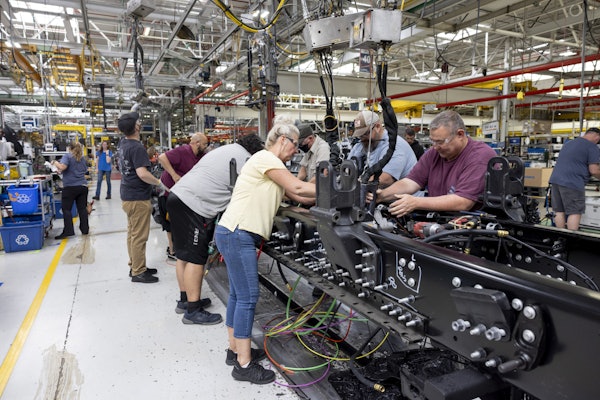
The trough in the freight market has emboldened efforts to eliminate drivers from the available pool by eliminating visas for truck drivers, through English-language enforcement, on top of existing efforts to improve the reliability of drug testing, and more.
All of these efforts are done in the name of improving safety, but I expect there are also parallel economic objectives to reduce trucking capacity so that freight pricing can improve for fleets and drivers.
I wonder how bad the driver shortage will be when the freight market trough turns into the next peak. Talking up a driver shortage in the midst of an over-capacity/insufficient-demand freight trough seems somewhat ill-timed. But reducing the driver pool during a trough seems to guarantee a more severe driver shortage when the market shifts gears and demand rises.
What will ease that burden? Will rules be relaxed for sidelined drivers who failed drug testing? Will autonomous vehicle development be accelerated to capitalize on the insatiable demand for more drivers? Will more freight move by a revitalized intermodal rail system? Will the elimination of de minimis tariff exemptions mitigate demand growth in LTL? Will increased tariffs on raw materials used to build trucks, trailers, and railcars place downward pressure on freight demand? Could regulated truck size and weight limits be revisited, enabling greater freight efficiency per truck? Could 18-year-old drivers get approved for driving trucks on interstates? Will hours-of-service rules be waived for all drivers?
There are many variables in play now that, perhaps, were out of bounds in the past. OEM management and engineers, fleet managers, drivers, shippers, and consumers probably wonder every day what new changes they will have to navigate. A popular word showing up at conferences and in the media is “uncertainty.”
We definitely live in uncertain times. Uncertain times wreak havoc with the concept of “lead times.” Lead times reflect the reality that a decision today has had to take time to gestate into existence.
For example, a new truck might typically take four to five years to be developed, or in some recent examples, perhaps nine to ten. Getting a new engine into production could take a decade.
New tires and their formulations can take several years to reach the production line. New computer chips, inherent in all the new devices on trucks, can take years to reach production. Utilities require lead time to analyze new demand and capacity, often taking years to make grid connections as they work to ensure the electrical grid system will be reliable. The examples of lead time abound.
Nearly all federal government agencies have definitions of Technology Readiness Assessment (TRA). A quick search will find guides describing TRA at NASA, DOD, DOE, EPA, GAO, and other organizations. The TRA is a methodology for developing new hardware and software, recognizing that they go through a maturation process over time.
One guide describes it this way: “Technology development is the process of developing and demonstrating new or unproven technology, the application of existing technology to new or different uses, or the combination of existing and proven technology to achieve a specific goal. Technology development associated with a specific acquisition project should be identified early in the project life cycle, and its maturity level should have evolved to a confidence level that allows the project to establish a credible technical scope, schedule, and cost baseline.”
Time and maturity seem to be inherent factors to consider when making decisions about technology. Necessity, however, can expedite things—along with money. New technologies expected to take decades can be accelerated if it becomes necessary. Smartphones are an example; just look at how quickly we went from the basic flip phone, which could at best make phone calls, to the ubiquitous smartphone that can do everything from monitoring your health to finding anything about anything anywhere in the world.
Trillions of dollars went into cellular networks and satellites to enable the connectivity we take for granted when viewing our favorite cat videos. The demand was there, the money was found, the timeline was accelerated, and the miracle happened. You can order peanut butter from your favorite store and have it delivered the same day.
The development of the smartphone and its required infrastructure happened with certainty. People wanted more and better, and they wanted it now. Both industry and government made it happen. So, what miracles and coincidences will happen to fix the looming next critical driver shortage when (not if) the freight market recovers? Time will tell.













